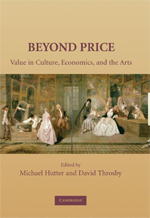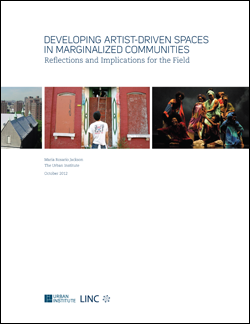Cross-disciplinary arts
On January 23, 2014, author and award-winning journalist Krista Tippett of On Being interviewed artist Ann Hamilton at the Minneapolis Institute of Arts. Their conversation was part of the museum’s “MIA Stories” series and took place in conjunction with Hamilton’s exhibit and project “Sacred.”
You can listen to the interview below, and you’ll find a full transcript on the On Being website.
Read More...Download:
![]() Developing Artist-Driven Spaces in Marginalized Communities (3.9 Mb)
Developing Artist-Driven Spaces in Marginalized Communities (3.9 Mb)
“AIDS? Wasn’t that an art movement in the eighties?” quipped the young Chelsea gallerist, straining for just the right mix of irony and hipness. Sensing that her question missed the mark, the young woman then quickly offered, “Well, that’s a joke I often hear from artist friends when they talk about AIDS.” Her remarks betrayed a too-often-repeated distancing strategy from the reality of HIV/AIDS and the underlying complexity that the epidemic poses for artists today. On one hand, such comments hint at the wholesale incorporation of AIDS-themed art practice into the academy/marketplace.
Read More...2009, 123 pages. Los Angeles County Museum of Natural History Foundation, 900 Exposition Blvd, Los Angeles, CA, 90007, 213-763-3466, www.nhm.org
Read More...September 2008, 53 pages. John D. and Catherine T. MacArthur Foundation, 140 S. Dearborn St, Chicago, IL, 60603, 312-726-800, www.macfound.org
Read More...January 2010, 21 pages. Fine Arts Fund, 20 East Central Parkway, Suite 200, Cincinnati, OH, 45202, 513-871-2787, www.fineartsfund.org
Supporters of the arts have struggled to develop a national conversation that makes the case for robust, ongoing public support for the arts; but public spending on the arts is too often criticized as an example of wasteful government spending or a misguided government intrusion into an area where it does not belong.
Read More...
Beyond Price: Value in Culture, Economics, and the Arts; Edited by Michael Hutter and David Throsby; Cambridge University Press, 2007, 324 pages
— Lewis Hyde
Recent studies on New York’s creative sector have established that the arts are a key asset in the city’s economic portfolio. Culture Counts: Strategies for a More Vibrant Cultural Life for New York City (2001); Creative New York (2005); and The Arts as an Industry: Their Economic Impact on New York City and New York State (2007) provide ample evidence that the diverse number of cultural institutions, arts-related businesses, and artists in New York generate employment, attract tourism, and enhance the city’s quality of life.
Read More...Before the house lights dim at a production of Romeo and Juliet, I look for myself and I am delighted to find myself as I was many years ago: A teenaged boy sitting by himself. I recognize him because he keeps checking the number on his ticket against the number on the armrest. All in all, he is pleased with his seat. He wears a sweater and tie. He reads his program with the intensity I used similarly to scrutinize the actors’ biographies, the director’s notes, and the advertisements for after-theater dining.
Read More...The current economic climate has forced many nonprofit arts organizations to confront underlying issues. Tensions mount, dollars are scarce, and unresolved weaknesses or fissures often grow. We have seen heartening examples of artists, donors, audiences, and funders rallying to support the art and organizations that they love. In some cases, streamlined, more focused organizations are forging ahead with renewed determination. But in other cases, the economic downturn may herald the time to close the doors.
Read More...
